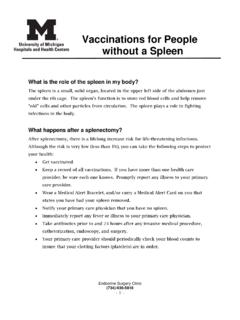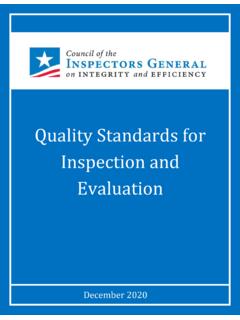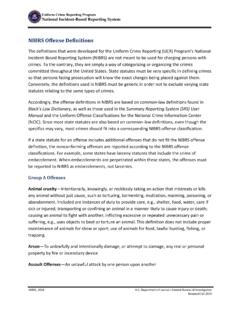Transcription of Clinical update on pulmonary hypertension
1 Yaghi S, et al. J Investig Med 2020;0:1 7. update on pulmonary hypertensionSalim Yaghi, Anastasia Novikov, Theo Trandafirescu To cite: Yaghi S, Novikov A, Trandafirescu T. J Investig Med Epub ahead of print: [please include Day Month Year]. Hospital Center, Medicine, Mount Sinai Medical Center, Queens, New York, USAC orrespondence toDr Theo Trandafirescu, Queens Hospital Center, Medicine, Mount Sinai Medical Center, Queens, NYC 11432, USA; ttrandaf@ gmail. comAccepted 6 February 2020 American Federation for Medical Research 2020. Re- use permitted under CC BY- NC. No commercial re- use.
2 Published by hypertension (PH) is a chronic, complex and challenging disease. Advances in treatment are for the subset of patients with pulmonary arterial hypertension . Selected review of the literature was conducted incorporating the European Society of Cardiology/European Respiratory Society 2015 guidelines and recommendations from the Sixth World Symposium on pulmonary hypertension . PH is classified into five groups based on WHO classification. Echocardiography remains the initial test of choice, and careful assessment of the right system aids in the diagnosis and prognosis of the disease.
3 Right heart catheterization remains the gold standard of diagnosis and key guidance of treatment. Multidisciplinary approach is recommended for the care of patients with PH. Treatment selection is based on individual risk stratification of patients, and early referral to specialized PH centers improves outcomes of patients. Treating PH is complex and is best carried out in PH centers and with multidisciplinary approach. Early diagnosis and referral to those centers are key not to delay hypertension (PH) has remained a challenging chronic progressive disease since the First World Symposium meeting in 1973, which opened the era to groundbreaking discoveries about its pathophysiology and various treatment options.
4 In this review, we try to summarize the latest evidence about the disease, its definition, classification, diagnosis and treatment, focusing mainly on group 1 pulmonary arterial hyperten-sion (PAH).definitionsPulmonary hypertension is defined as a mean pulmonary arterial pressure (mPAP) greater than 20 mm Hg at rest as per the Sixth World Symposium on pulmonary hypertension in 2018,1 and greater than 25 mm Hg at rest as per the guidelines issued by the European Society of Cardiology (ESC)/European Respiratory Society (ERS) in A subset of patients with pulmonary arterial pressure (PAP)
5 Of between 21 and 24 mm Hg are considered high- risk patients with possible poor outcomes if left unfollowed, which is why they were included in the Sixth World Symposium authors based this recommendation on the fact that the original definition of mPAP of at least 25 mm Hg was chosen somewhat arbi-trarily and does not represent the upper limit of normal mPAP in the general 3 The prior assessment of PAP at exercise is not recommended with the current definitions due to lack of reliable data that precisely define which levels of exercise- induced changes in PAP or pulmonary vascular resistance have prog-nostic 3 Hemodynamic definitions of PH
6 Which include more than just the PAP during right heart catheterization (RHC) are probably more useful clinically as they have prognostic and therapeutic implications and can help with further classification of the disease. The major players here are pulmonary vascular resis-tance and pulmonary capillary wedge pressure (table 1).1 3 ClassificationsThe WHO classification1 2 categorizes multiple Clinical conditions into five groups according to similarities in Clinical presentation, patholog-ical findings, hemodynamic characteristics and treatment approach.
7 These subtypes of PH are agreed on by the ESC in 2016 and the Sixth World Symposium (box 1 and tables 2 4).diagnosisECG findingsAn ECG may provide supportive evidence of PH, but a normal ECG does not exclude the An abnormal ECG is more likely in severe rather than mild PH. ECG abnormalities may include P pulmonale, right axis deviation, RV hypertrophy, RV strain, right bundle branch block, and QTc prolongation. Prolongation of the QRS complex and QTc suggests severe arrhythmias may occur in advanced disease, in particular atrial flutter, but also atrial fibrillation, with a cumulative inci-dence of 25% in patients after 5 Ventric-ular arrhythmias are remains the first test of choice when PH is suspected,6 not only because it estimates systolic PAP but also because it can assess for signs of right ventricular (RV) dysfunc-tion as well as left ventricular (LV)
8 And interpreting echocardiographic imaging in respect to PH and its related effects on the right cardiac side is challenging; on January 28, 2022 by guest. Protected by Investig Med: first published as on 1 April 2020. Downloaded from 2 Yaghi S, et al. J Investig Med 2020;0:1 7. 1 Hemodynamicdefinitions of pulmonary hypertension typesdefinitionMean pulmonary artery pressure (mm Hg) pulmonary capillary wedge pressure (mm Hg) pulmonary vascular resistance (Wood units)Isolated precapillary PH (formerly pulmonary arterial hypertension )20<153 Combined postcapillary and precapillary pulmonary hypertension (PH)153 Isolated postcapillary PH15<3box 1 updated Clinical classification of pulmonary hypertension (PH)1.
9 pulmonary arterial hypertension (PAH). Idiopathic. Heritable. Drug- induced and toxin- induced (see table 2). Associated with the following: Connective tissue disease. Portal hypertension . Congenital heart disease. Schistosomiasis. PAH long- term responders to calcium channel blockers (see table 3). PAH with overt features of pulmonary veno- occlusive disease/or pulmonary capillary hemangiomatosis (see table 4). Persistent PH of the newborn pulmonary hypertension due to left heart disease. PH due to heart failure with preserved left ventricular ejection fraction. PH due to heart failure with reduced left ventricular ejection fraction.
10 Valvular heart disease. Congenital/acquired cardiovascular conditions leading to postcapillary pulmonary hypertension due to lung disease and/or hypoxia. Obstructive pulmonary diseases. Restrictive pulmonary diseases. Other lung disease with mixed restrictive/obstructive pattern. Hypoxia without lung disease. Developmental lung pulmonary hypertension due to pulmonary artery obstruction. Chronic thromboembolic PH. Other pulmonary artery obstructions. Sarcoma (high or intermediate grade) or angiosarcoma. Other malignant tumors (renal, uterine, germ cell tumor of the testis, other tumors).






